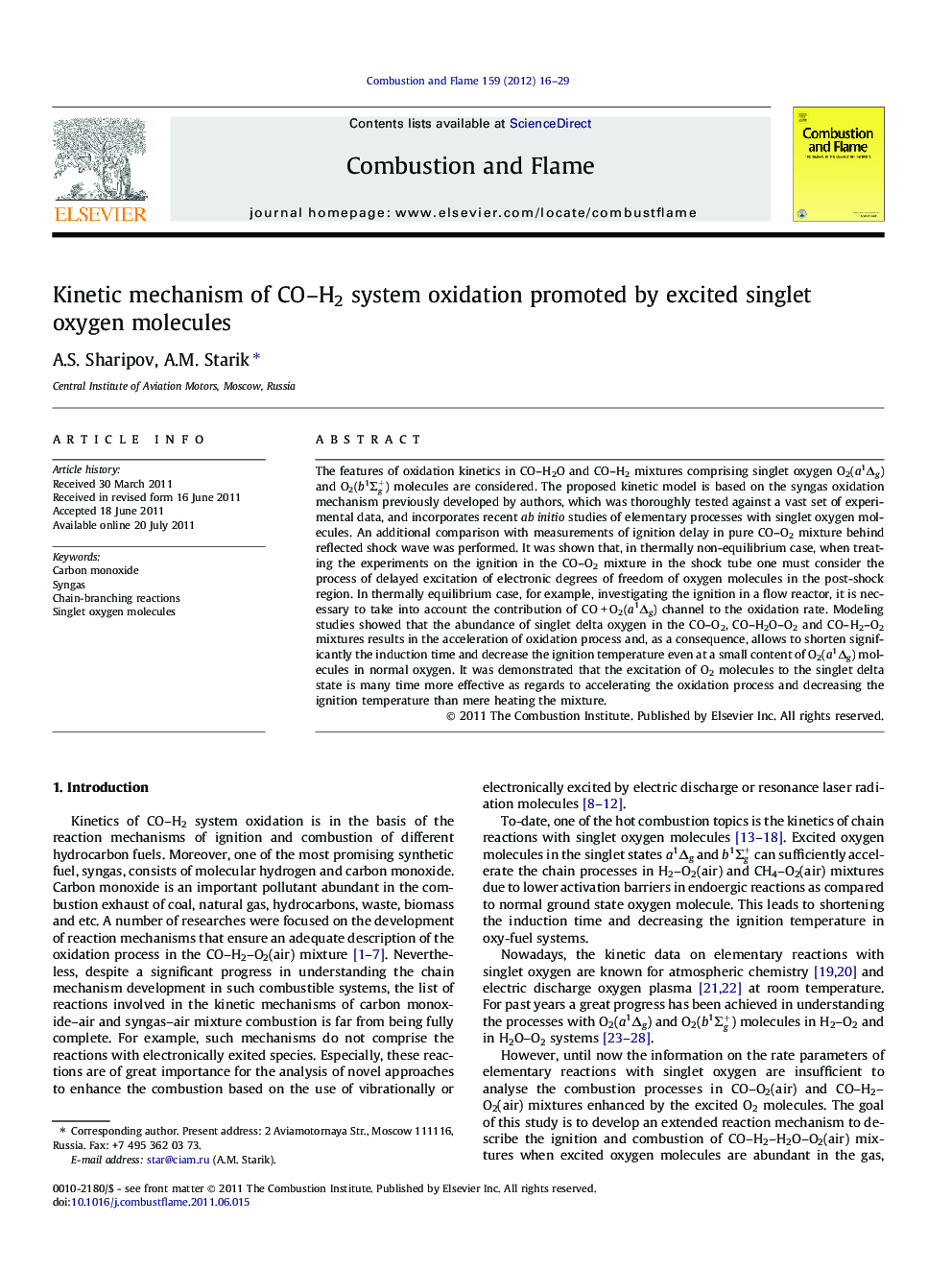| Article ID | Journal | Published Year | Pages | File Type |
|---|---|---|---|---|
| 169151 | Combustion and Flame | 2012 | 14 Pages |
The features of oxidation kinetics in CO–H2O and CO–H2 mixtures comprising singlet oxygen O2(a1Δg) and O2(b1Σg+) molecules are considered. The proposed kinetic model is based on the syngas oxidation mechanism previously developed by authors, which was thoroughly tested against a vast set of experimental data, and incorporates recent ab initio studies of elementary processes with singlet oxygen molecules. An additional comparison with measurements of ignition delay in pure CO–O2 mixture behind reflected shock wave was performed. It was shown that, in thermally non-equilibrium case, when treating the experiments on the ignition in the CO–O2 mixture in the shock tube one must consider the process of delayed excitation of electronic degrees of freedom of oxygen molecules in the post-shock region. In thermally equilibrium case, for example, investigating the ignition in a flow reactor, it is necessary to take into account the contribution of CO + O2(a1Δg) channel to the oxidation rate. Modelling studies showed that the abundance of singlet delta oxygen in the CO–O2, CO–H2O–O2 and CO–H2–O2 mixtures results in the acceleration of oxidation process and, as a consequence, allows to shorten significantly the induction time and decrease the ignition temperature even at a small content of O2(a1Δg) molecules in normal oxygen. It was demonstrated that the excitation of O2 molecules to the singlet delta state is many time more effective as regards to accelerating the oxidation process and decreasing the ignition temperature than mere heating the mixture.
